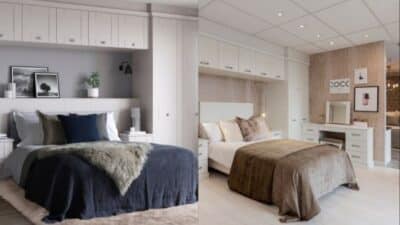A neat desk setup is more than just an aesthetic choice—it’s a fundamental element of productivity and mental clarity in your workspace. Creating an organized desk environment can significantly reduce stress, improve focus, and enhance your overall work efficiency. Whether you’re designing a home office or upgrading your workplace station, thoughtful desk organization creates a foundation for better work experiences.
Finding inspiration for your desk setup doesn’t have to be overwhelming. From minimalist arrangements to functional storage solutions, the perfect desk organization system should reflect both your personal style and practical needs. Many designers recommend starting with the essentials and gradually adding elements that serve specific purposes in your workflow.
The beauty of desk organization lies in its adaptability to different spaces and work styles. You can transform even a small desk into an efficient command center with the right combination of storage solutions, cable management, and thoughtful placement of frequently used items. When your workspace feels orderly and intentional, you’ll likely find yourself more motivated to tackle daily tasks.
Key Takeaways
- A well-organized desk significantly improves productivity, mental clarity, and reduces workplace stress.
- Your desk organization system should balance aesthetic appeal with practical functionality tailored to your specific work needs.
- Start with essential organization elements before adding specialized accessories that enhance your particular workflow.
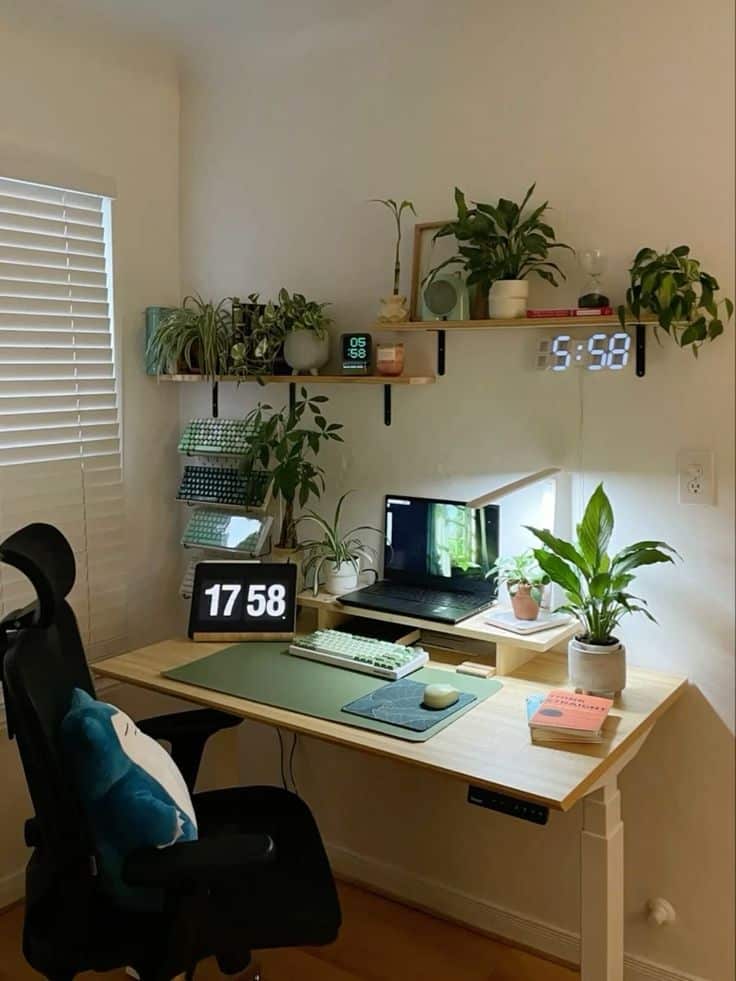
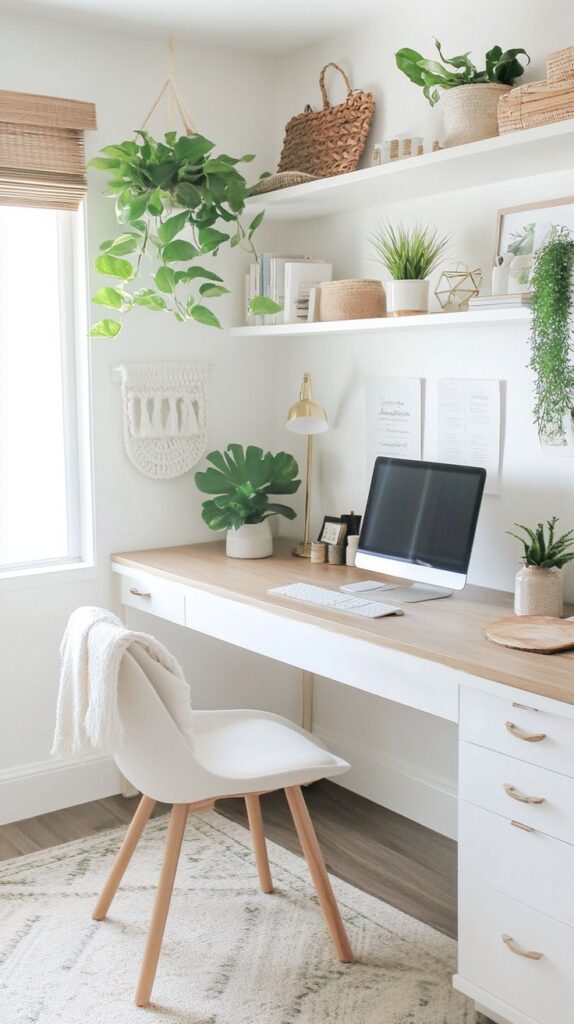
The Foundations of a Neat Desk
Creating a functional workspace starts with establishing solid foundations. A well-organized desk boosts productivity and creates a sense of calm that can transform your work experience.
Establishing a Clutter-Free Desk
Begin by sorting everything on your desk into categories based on importance and frequency of use. Only keep essential items within arm’s reach while storing less frequently used supplies in drawers or nearby cabinets.
Create designated zones for different activities – a primary work area, a space for reference materials, and perhaps a small section for personal items.
Implement the “touch it once” rule – when you pick up a document, immediately decide whether to act on it, file it, or discard it. Don’t let papers accumulate.
Invest in practical storage solutions like stackable trays, drawer organizers, and cable management systems. These tools help maintain order without sacrificing accessibility.
Daily maintenance is crucial – spend 5 minutes at the end of each workday returning items to their proper places. This simple habit prevents clutter from rebuilding overnight.
Principles of Minimalist Design
Embrace negative space as a design element rather than viewing it as empty area to fill. A desk with breathing room feels more inviting and allows your mind to focus.
Select a cohesive color palette of 2-3 complementary colors to create visual harmony. Neutral tones like whites, grays, and wood finishes provide a timeless foundation.
Choose functional items that double as design elements – a sleek lamp, an elegant pen holder, or a beautiful notebook can be both practical and aesthetically pleasing.
Quality trumps quantity when selecting desk accessories. Invest in fewer, higher-quality pieces that serve specific purposes rather than accumulating decorative clutter.
Consider how natural light interacts with your workspace and position your desk to maximize daylight without creating screen glare.
Choosing the Right Desk Setup
Measure your available space carefully before selecting a desk. Allow at least 3-4 feet of clearance behind your chair and enough room to move freely around the workspace.
Consider your specific work needs – writers might prefer a spacious surface while graphic designers may require multiple monitor setups with adequate depth.
Ergonomics should be a priority. Your desk height should allow your elbows to rest at approximately 90 degrees when typing, and there should be space for proper monitor positioning.
Investigate adjustable or standing desk options if you prefer to alternate between sitting and standing throughout the day. This flexibility can improve both comfort and focus.
Don’t overlook cable management solutions built into the desk design. Features like grommets, cable trays, and hidden power strips keep technology connections tidy and accessible.
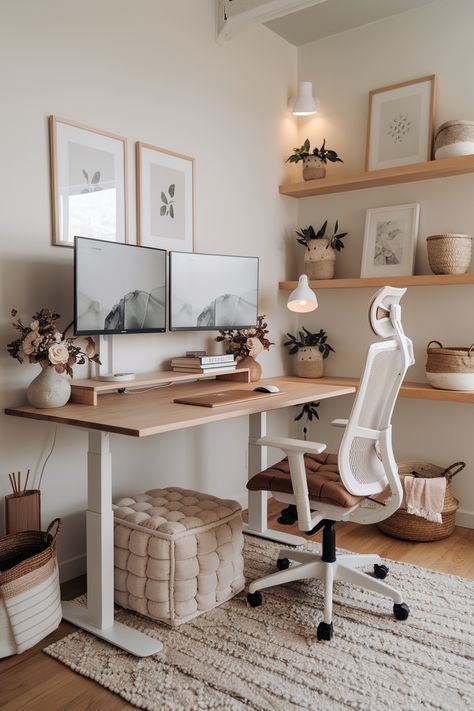
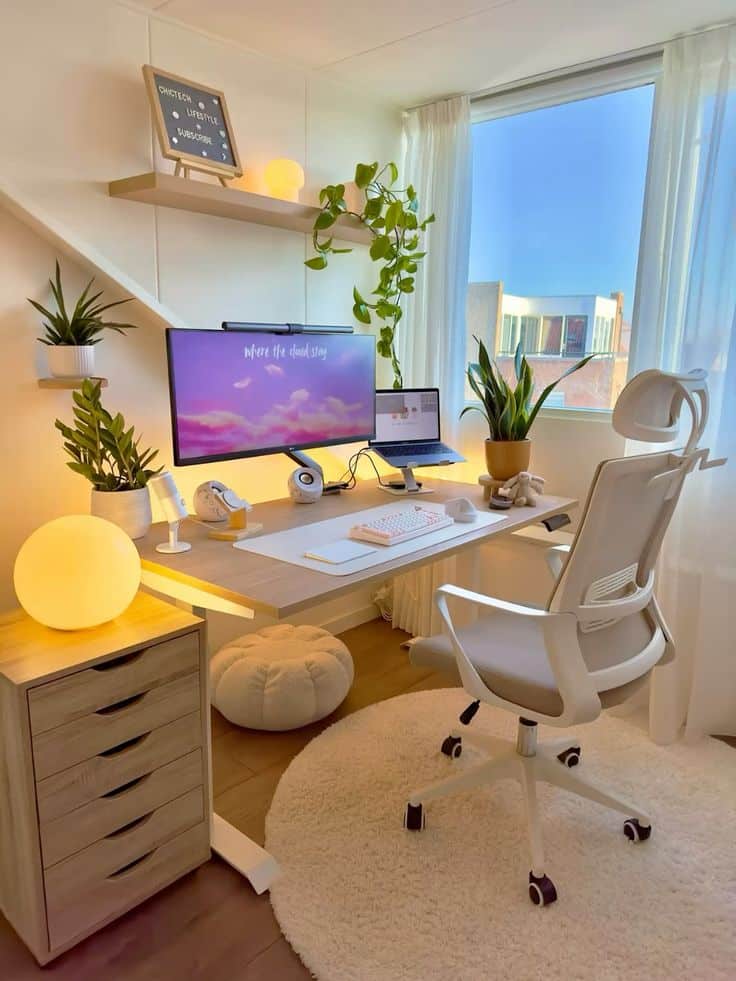
Essential Desk Organization Strategies
A well-organized desk boosts productivity and creates a more pleasant work environment. These practical strategies help transform cluttered workspaces into efficient, functional areas that support your daily tasks.
Declutter: From Messy Desk to Order
Start your organization journey by removing everything from your desk surface. Sort items into three categories: keep, store elsewhere, and discard. Be ruthless with papers—scan important documents and recycle the rest.
Establish a “one-touch” rule for handling paperwork. When you receive a document, immediately decide whether to act on it, file it, or discard it. This prevents paper piles from accumulating.
Create designated zones on your desk for different activities. A computer zone, writing area, and reference section help maintain order throughout the workday.
Implement a daily five-minute cleanup routine. Take a few moments at the end of each day to reset your workspace, ensuring you start fresh tomorrow.
Selecting Effective Desk Organizers
Choose desk organizers based on your specific needs rather than aesthetic appeal alone. Drawer dividers keep small items separated and easily accessible.
Essential organizers to consider:
- Vertical file sorters for current projects
- Cable management solutions
- Desktop trays for papers requiring immediate attention
- Pen holders and small containers for frequently used items
Opt for modular organizing systems that can adapt as your needs change. Stackable trays, adjustable dividers, and expandable file systems provide flexibility.
Invest in quality organizers for items you use daily. Durable materials like metal mesh, bamboo, or reinforced plastic withstand frequent use and maintain their appearance longer.
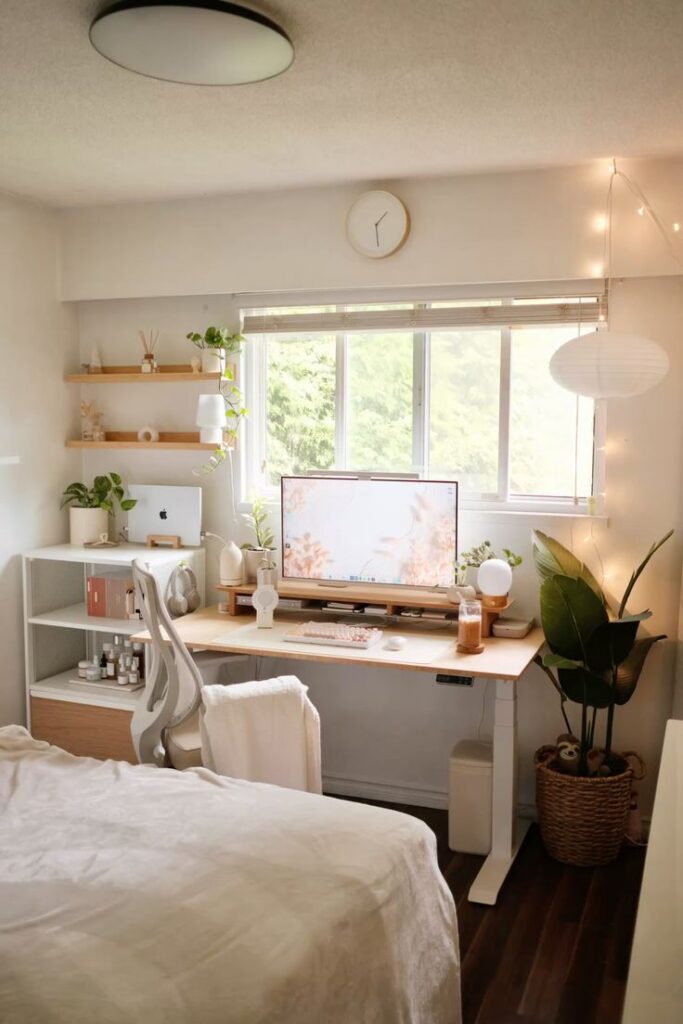
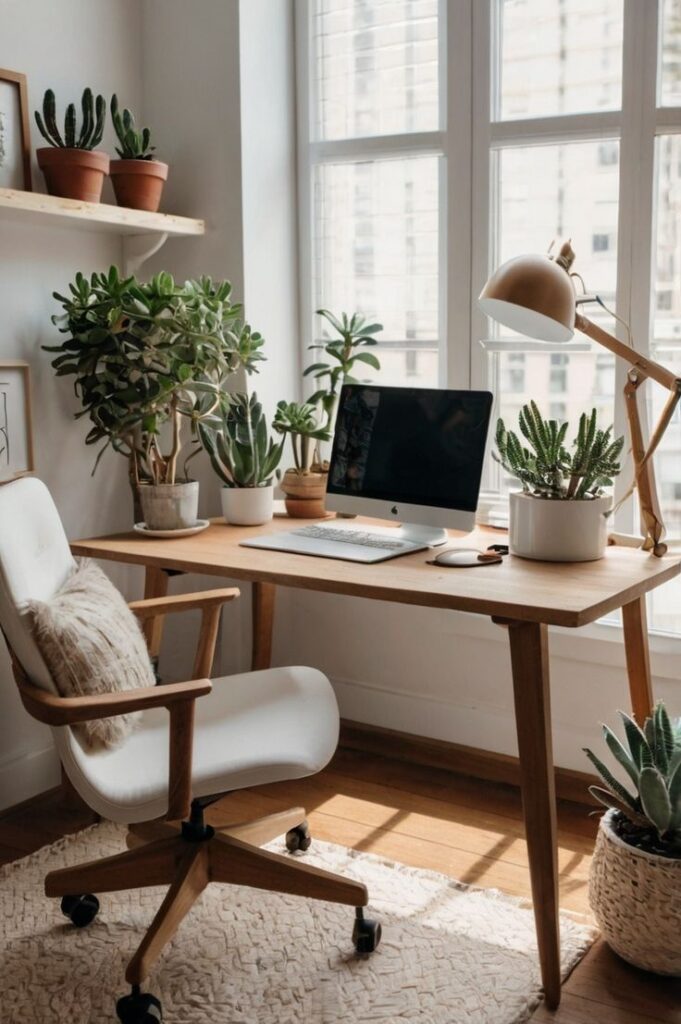
Smart Placement of Office Supplies
Position frequently used supplies within arm’s reach to minimize disruptions to your workflow. Keep items like pens, notepads, and staplers in your primary work zone.
Store supplies you use less often in drawers or cabinets. This reduces visual clutter while keeping materials accessible when needed.
Consider these placement strategies:
- Right-handed? Place writing tools on the right side
- Left-handed? Position supplies on the left
- Reserve the area directly in front of you for current tasks only
Use vertical space with wall-mounted organizers or shelving above your desk. This expands your storage capacity without consuming valuable desk surface area.
Label storage containers clearly to eliminate time wasted searching for supplies. Simple, consistent labeling systems prevent disorganization from returning.
Incorporating Desk Accessories for Utility
Select accessories that serve multiple purposes. A monitor stand with built-in storage compartments provides ergonomic benefits while organizing small items.
Invest in proper cable management solutions like cord clips, cable sleeves, or desk grommets. Tangled wires create visual chaos and can interfere with your workspace.
Consider these functional accessories:
- Desk pad/blotter: Protects the surface while defining your work area
- Task lamp: Provides focused lighting while minimizing desk footprint
- Bulletin board: Keeps important notes visible without cluttering your desk
Personalize with 1-2 meaningful items that inspire productivity. A small plant, favorite photo, or motivational quote adds character without creating clutter.
Balance aesthetic appeal with practicality when selecting accessories. Even beautiful organizers should fulfill a specific purpose in your workspace.
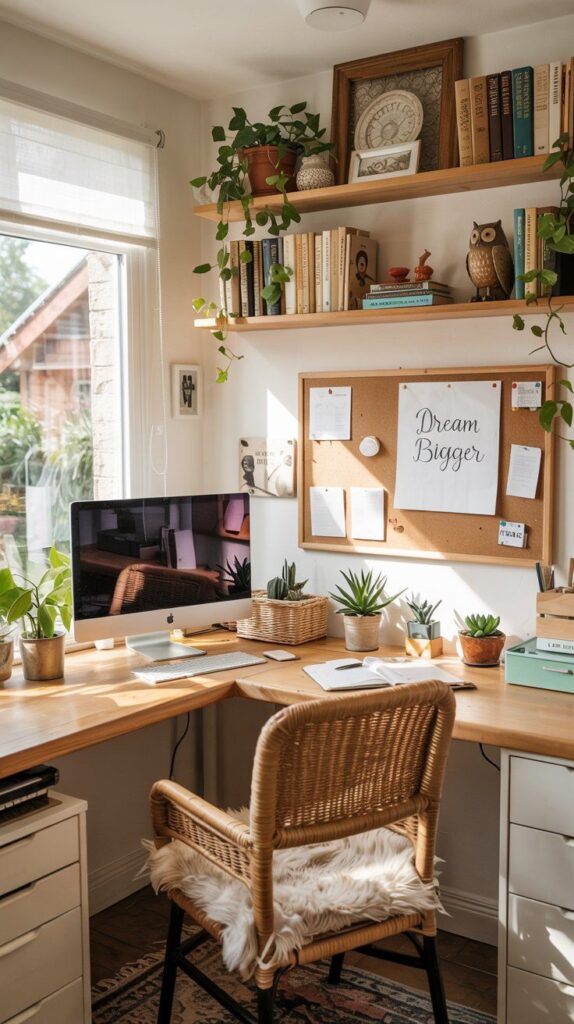
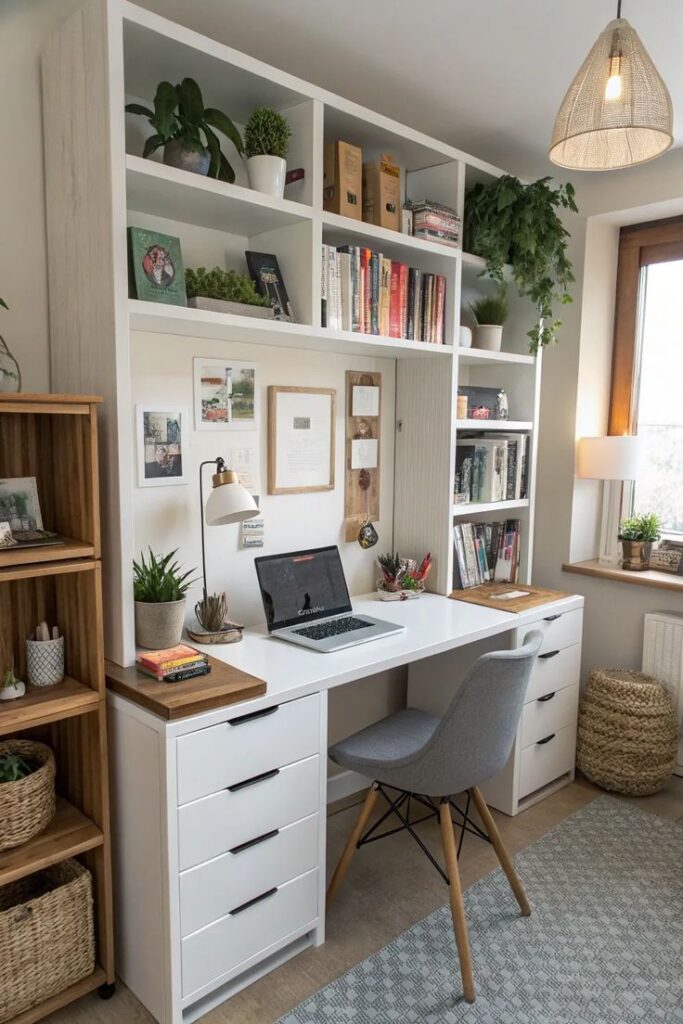
Optimizing Your Desk for Productivity
A well-organized desk setup can dramatically improve your focus and efficiency. The right arrangement of tools, lighting, and ergonomic elements creates an environment where your best work can flourish.
Creating Zones for Focus and Workflow
Designate specific areas on your desk for different activities to maintain order and improve workflow. Consider creating three primary zones: a focus zone for your main work, a reference zone for materials you frequently access, and a storage zone for less-used items.
Keep your primary workspace clear of distractions, positioning only essential tools within arm’s reach. This minimizes interruptions to your concentration when you need to grab something.
Try the “clean canvas” approach by clearing your desk completely at the end of each day. This simple habit provides a fresh start every morning and reduces visual clutter that can impede productivity.
Cluster similar items together based on related tasks. For instance, keep note-taking supplies in one area and technology peripherals in another to create intuitive workflow patterns.
Utilizing Task Lighting
Proper lighting significantly affects your productivity and eye health. Position your primary light source to minimize glare on screens and reduce eye strain during long work sessions.
Adjustable desk lamps with multiple brightness settings allow you to customize lighting based on the task at hand. Brighter, cooler light temperatures (4000K-5000K) enhance focus during detail-oriented work, while warmer tones create a more relaxed atmosphere.
Natural light offers substantial benefits for your focus and mood. Position your desk near a window when possible, but use blinds or curtains to control glare during peak daylight hours.
Consider bias lighting behind your monitor to reduce eye strain and improve contrast when working with screens. This simple addition creates balanced ambient lighting that can prevent headaches and fatigue.
Benefits of a Standing Desk
Adjustable standing desks provide flexibility to alternate between sitting and standing throughout your workday. This variation in posture can increase energy levels and reduce the health risks associated with prolonged sitting.
The ideal arrangement incorporates a 1:1 ratio—standing for 30 minutes after sitting for 30 minutes. This balance maximizes the ergonomic benefits without causing fatigue from extended standing.
Standing while working can increase alertness and energy levels during afternoon slumps. Many users report improved focus and creativity when alternating between positions.
Look for desks with programmable height settings that allow quick transitions between sitting and standing positions. The easier it is to change positions, the more likely you are to use this beneficial feature regularly.
Incorporating Noise-Canceling Headphones
High-quality noise-canceling headphones serve as an invisible barrier against distractions in busy environments. They effectively block ambient noise that fragments attention and disrupts deep work states.
Beyond noise reduction, these headphones can enhance focus through strategic audio choices. Low-fi music, white noise, or nature sounds can create a consistent audio backdrop that masks irregular, attention-grabbing sounds.
Consider wireless models to eliminate cord management issues on your desk. Modern options offer 20+ hours of battery life, ensuring they’ll last through even the longest workdays.
When selecting headphones, prioritize comfort for extended wear. Over-ear designs with memory foam padding reduce pressure points during long sessions, while lightweight materials prevent neck strain.
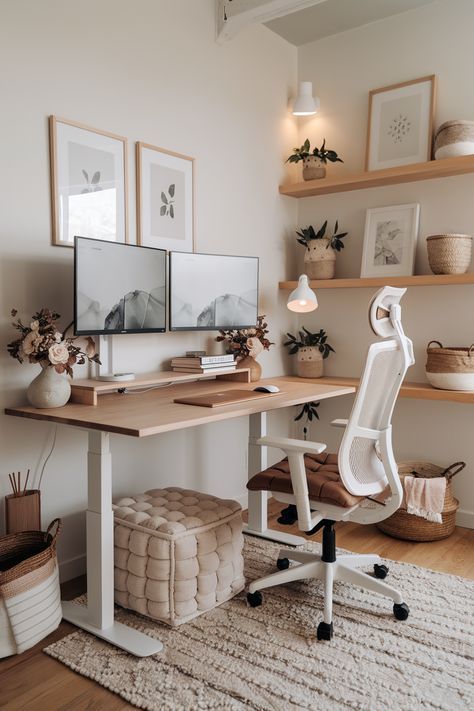
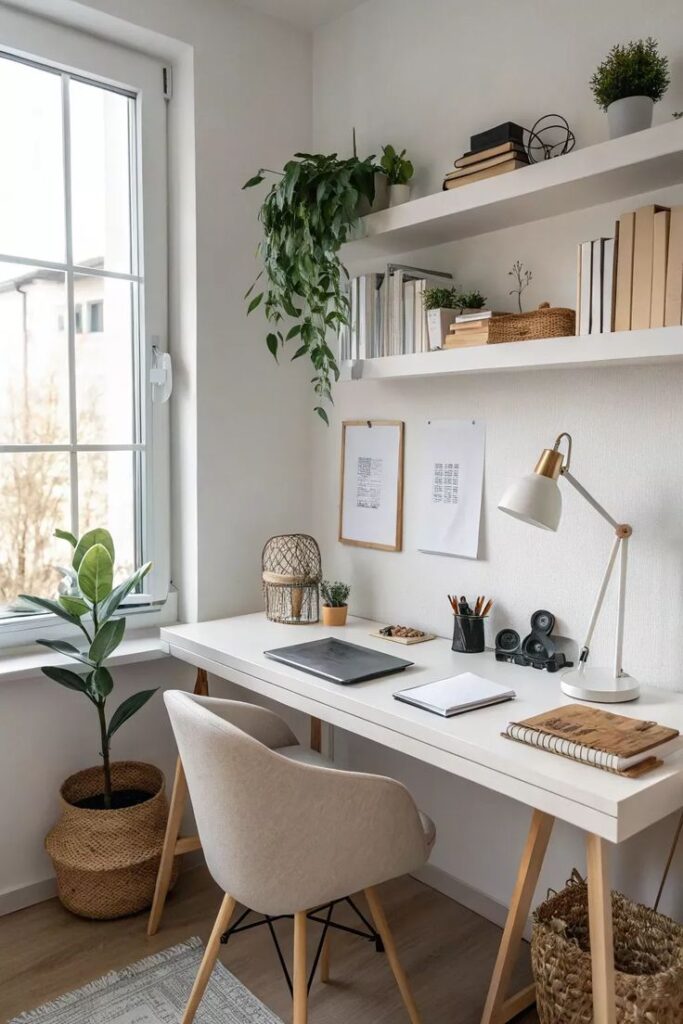
Boosting Creativity and Creative Thinking
A well-organized desk can actually enhance your creative capabilities through intentional design choices. Studies show that your workspace directly influences how you think and produce ideas.
Designing for Inspiration and Aesthetics
Your desk aesthetics play a significant role in fostering creativity. Choose a color scheme that energizes you—blues and greens promote calmness and focus, while yellows and oranges can stimulate creative thinking.
Consider incorporating plants into your desk setup. Research shows that greenery can improve creative performance by up to 15%. Even a small succulent or bamboo plant can make a difference.
Lighting matters tremendously. Position your desk to maximize natural light, which studies show boosts mood and creative output. For evening work, use adjustable lighting that mimics daylight rather than harsh fluorescents.
Art pieces or photographs that inspire you should be within view but not distracting. These visual cues can trigger new thought patterns when you hit creative blocks.
Personalizing with Notepads and Visual Elements
Keep multiple notepads within reach for different purposes. One study found that handwriting activates regions of the brain that typing doesn’t, potentially enhancing creative connections.
- Small notepad for quick ideas
- Sketch pad for visual brainstorming
- Journal for deeper exploration of concepts
Create a rotating inspiration board with images, quotes, and color swatches relevant to current projects. This visual element provides fresh perspectives when you feel stuck.
Pin up samples of work you admire or previous successes to maintain motivation. These reminders can trigger new approaches to challenges you’re facing.
Consider tactile elements too—textured paper, quality pens, and tangible objects that please your senses can stimulate different neural pathways.
Encouraging Creative Thinking through Layout
Arrange your desk with designated zones for different thinking modes. Reserve the center for focused work and the periphery for reference materials and inspiration items.
Leave some empty space intentionally. Research indicates that visual breathing room allows your mind to wander productively rather than feeling overwhelmed.
Position tools for spontaneous capture of ideas within easy reach. When creative thoughts strike, the friction of searching for a pen can cause you to lose the inspiration.
Try the “creativity tray” approach—a small container with thinking prompts, unusual objects, or questions that you can engage with during mental blocks.
Experiment with standing versus sitting positions. Changing your physical perspective can shift your cognitive approach to problems. Some studies suggest standing can increase creative output for certain tasks.
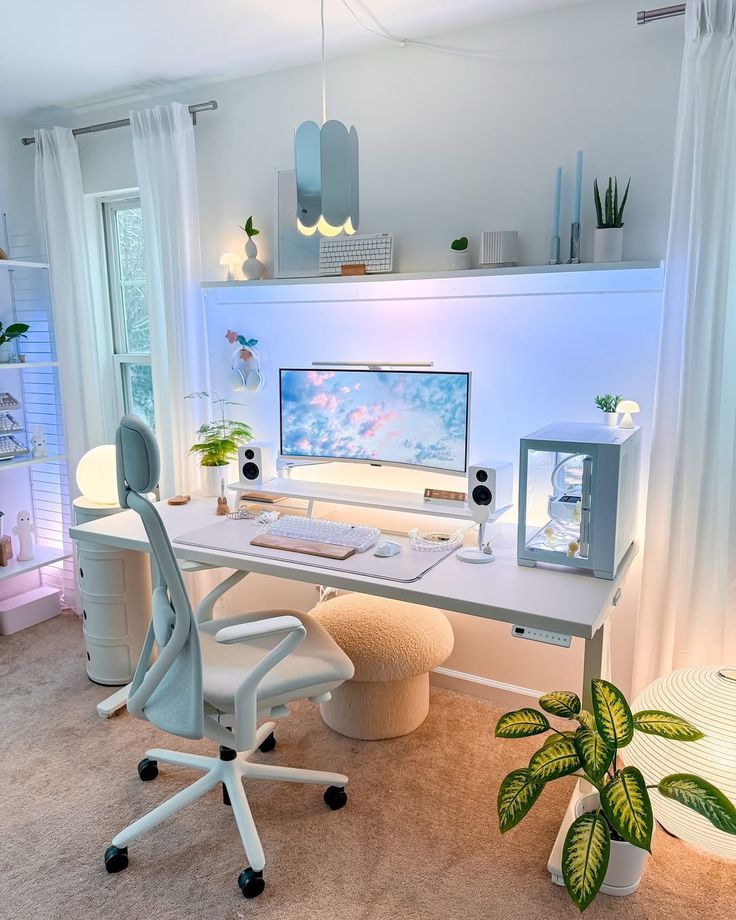
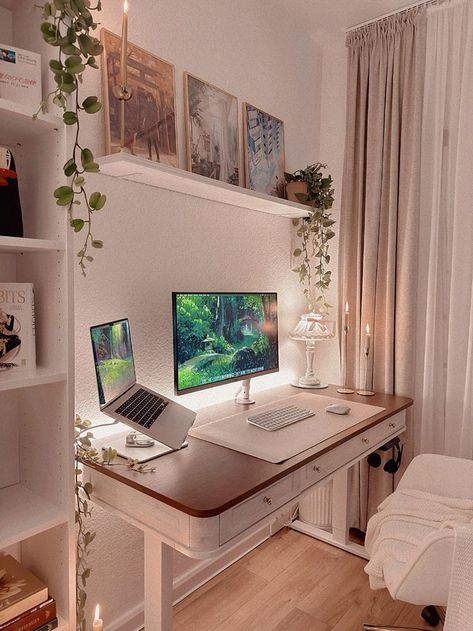
Advanced Neat Desk Accessories and Solutions
The key to maintaining a neat desk lies in purposeful accessories that combine functionality with organization. Modern solutions now address ergonomics, space optimization, and focus enhancement through thoughtful design.
Choosing the Right Monitor Stand
Monitor stands serve as essential foundations for an organized workspace. They elevate your screen to eye level, reducing neck strain while simultaneously creating valuable storage space underneath.
Look for stands with built-in compartments for storing small items like paperclips, sticky notes, and USB drives. Bamboo options offer durability with a natural aesthetic, while aluminum stands provide sleek minimalism.
For multi-monitor setups, consider adjustable arm mounts that clamp to your desk edge. These free up significant desk space and allow you to position screens exactly where you need them.
Weighted bases provide stability, preventing wobbling when you type. Some advanced models even include wireless charging pads or USB hubs, reducing cable clutter while adding functionality.
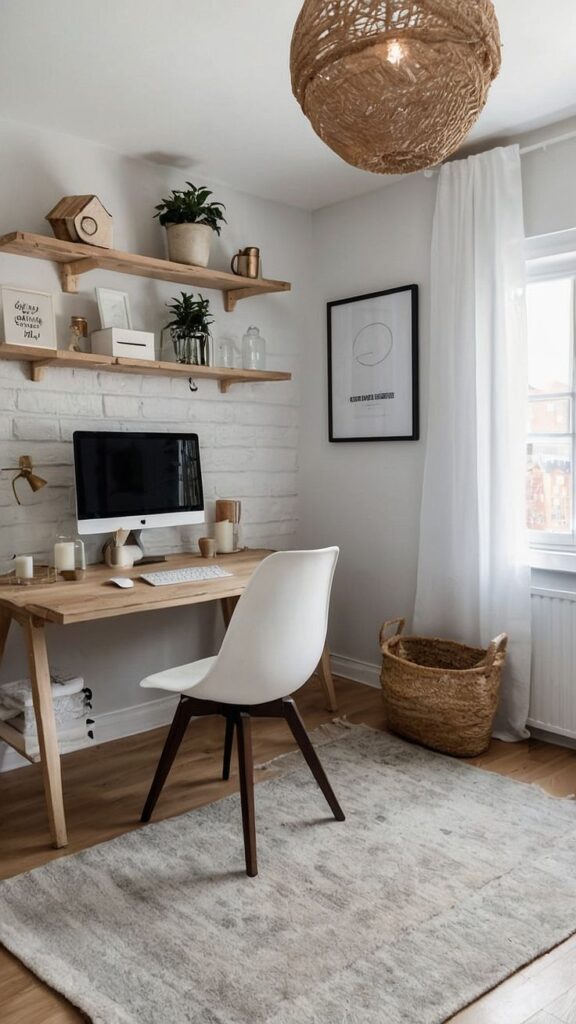
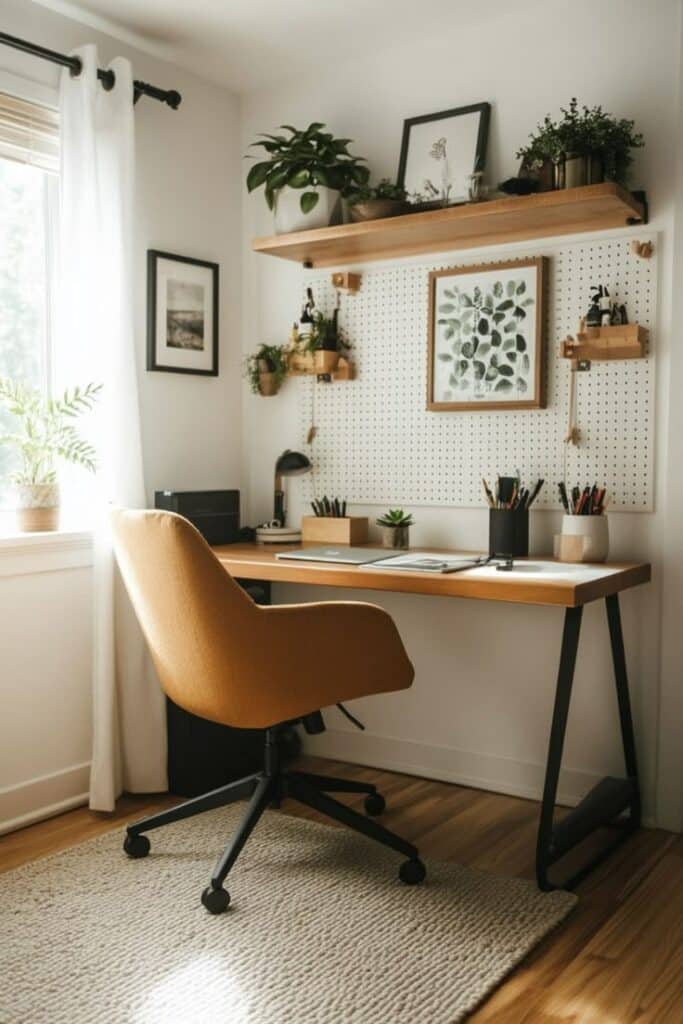
Adjustable Desk Innovations
Height-adjustable desks have revolutionized home office setups by allowing you to alternate between sitting and standing throughout your workday. The health benefits include improved posture, increased energy, and reduced back pain.
Smart desks now offer memory settings that recall your preferred heights with a simple button press. Some models connect to apps that track your sitting/standing patterns and remind you to change positions regularly.
Consider cable management systems specifically designed for adjustable desks. These flexible solutions move with your desk, preventing cord tangles or disconnections.
Look for adjustable desks with integrated power solutions like built-in outlets or wireless charging pads. These eliminate the need for extension cords that can create visual clutter on your workspace.
Integrating Headphones for Focus
Proper headphone integration can transform your desk organization while enhancing productivity. Dedicated headphone stands or under-desk hooks keep your audio gear accessible without consuming valuable desk surface area.
Wireless headphones eliminate cord clutter while providing freedom of movement. Consider models with active noise cancellation if you work in distracting environments.
Look for headphones with long battery life and quick-charging capabilities. This prevents workflow interruptions and reduces the number of cables needed at your desk.
For video calls, headsets with built-in microphones keep your desk clear of additional equipment. Models with mute indicators help you avoid embarrassing moments during important meetings.
Headphone cases or pouches can be mounted to the side of your desk for storage when not in use, maintaining your clean aesthetic while protecting your investment.
- 374shares
- Facebook0
- Pinterest374
- Twitter0



